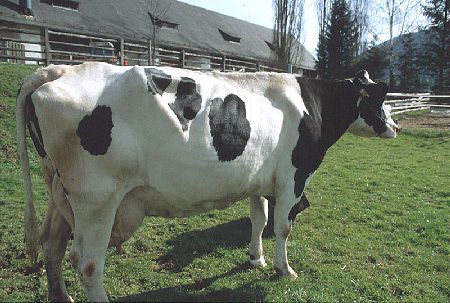This question is of great economic importance for dairy farmers. Metabolic diseases lead to significant reductions in performance, fertility problems, excessive veterinary costs, reduced useful life and animal losses.
Energy supply in the first third of lactation is the central problem in feeding dairy cows. During this phase, the cows are often exposed to an energy deficit, meaning their feed intake does not keep pace with their energy requirements. The result is the mobilization of body reserves with all sorts of negative effects on metabolism (ketosis), fertility and ultimately profitability.
The extent of mobilization and the level of feed intake are largely determined by the supply before calving. The aim of the present project is to examine the influence of inadequate and excessive energy intake compared to standard supply before and after calving on production data, metabolism, milk quality and body composition of dairy cows.
The study period includes 3 months before calving and the first 100 days of lactation. In addition to the purely production-related data (feed intake, milk yield), this project is intended to shed light on the metabolic situation of the cows (cooperation with the Stmk. Cattle Health Service) and the milk quality (cooperation with BA Rotholz). Due to the very different energy supplies, serious influences are to be expected both on the composition of milk fat (mobilization of body fat, feeding-dependent production of volatile fatty acids in the rumen) and on the protein content of the milk, which is dependent on the energy supply. Determining body composition using the D2O method represents a methodological approach that is novel for Austria (cooperation with the University of Hohenheim). The data on feed intake and milk production as well as the resulting health status are essential starting data for economic calculations.
Further information on project management can be found in the database for research and sustainable development (Dafne) -> Link







